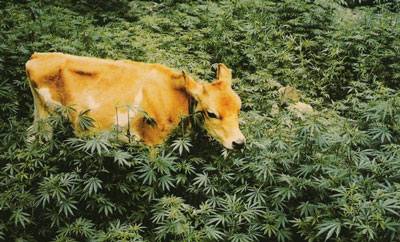Thanks for sharing this.
Superb read!
Besides popularity, beneficial opportunities in frameworks are worthwhile considerations. It can offer collaborative strategy towards (optimised) mutual actions.
What strikes me is the technical emphasis in the study - it leaves the reader to consider design systems creating behaviour vs. design behaviour creating outcome. While targeting how to change behaviour of end-users, the latter considers how this can be done (on a different level for greater impact), altering behaviour to create favourable sustainability situations. Closely inter-linked. Perhaps, these can be thought of as (binding) parallels in techno-social exchanges.
Are both aspects important in unfolding a new type of economy?
How can these be considered in different socio & cultural -contexts so as also to gain traction in uptake?
The study speaks about the system but not the people, still it is acknowledged that “a circular economy cannot be achieved without sharing the logistical knowledge that Is presently locked up in the walled gardens of private logistics. Only by sharing each other’s input and output can partners in an open ecosystem adapt towards a real circular economy.” For this very reason, behavioural aspects should not be overlooked or solely tackled through a systematic effort.
(Further thoughts…)
Impressions
The P2P study provides a substantial overview of existing resources leading up towards a new type of economy (described in their conclusion). Emerging techno-social trends are supra interesting, as much as innovation radars it serves to facilitate agents towards changes in behaviour as a result of the system. While the initiatives listed are widely beneficial - it does not question the rate at which other and/or competing technologies are developed. Nor unforeseen circumstances that make build-ups for similar tools more vulnerable taken that people are ultimately and remain the primary creators & operators of tools. Technically, it is fabulous study where value is broadly discussed but the framework does not mention for whom and why (given that is taken). It does so to an extent by explaining how tools enable behaviour around commoners. Intangible assets such as humanity and relationships between human beings are central in that people are the creators and operators of functioning systems. In this sense behavioural design becomes a tool with complementary significance.
Shifting mindsets
Schneider’s description of the P2P model, as a “paradigm-making vision for how to flip the future of the economy right side up, ” encapsulates the systematic result that influences behaviour. In its own right, the P2P report recaps a comprehensive overview of available technologies and alternative economies. On the other hand, it does this without fully addressing behavioural design: the very essence of what contributes to circulating economies, one might argue that it lacks a future-proof methodology. Individuals are the enablers and transformers of the economy. I believe that this point is understated, or at the very least vastly underestimated. The common good economy and the value flow shares livelihood, love and care are interesting concepts, accounting for value sovereignty. As mentioned in the study, recognising incentivising contributions and making participation sustainable for everyone at the very beginning of the economic process in a transparent way is essential.
In context
Taken the speed of technological development coupled with social, economic and environmental issues requires attention, while simultaneously challenging people to demonstrate flexibility, learn quickly and apply the knowledge. With regard to a wider coordination and the capacity to manage a broad range of stakeholders is pivotal : the ability to communicate in a clear and concise manner, and work in various teams while demonstrating analytical thinking. Human capacity to manoeuver and leverage resources are indispensable to maintain positive outcomes, those that re-generate (reinforce) and accelerate sustainable actions across the broader spectrum. The P2P model places emphasis on the mutual, thereby encouraging an all-inclusive method. All-the-more, perceptions and perspectives matter.
On Sustainability
This article provides an alternative (rather complementary) approach on emerging techno-social aspects, with regard to human-centric practices it discusses behavioral science as a powerful tool to direct human behaviours toward sustainable outcomes.
“Exploring the untapped potential of design behavior for sustainability is the focus of a recent expert panel [report from Nature Sustainability (https://www.nature.com/documents/design_behavior_for_sustainability.pdf)”
“Collaborating effectively in this way, however, is often easier said than done. The incentive structures in each discipline and between research and practice are very different. Even if all involved are sincerely aligned on the end goal of increased sustainability, the varied mindsets and contexts in which we work typically reward different activities and suggest different measures or proof of value.”
It continues by stating how they as a community can influence policy and inviting others to participate. Economies of scope as mentioned in the accounting for planetary survival study could consider the cognitive enterprise of people to maintain flow throughout the value chain and to encourage the footings of a sound architecture for what that may be.
Conclusion
In contrast to emerging trends in techno-social tools, “design of behaviour” illuminates the contributing requisite by pinpointing that “end-use behavior can determine what happens in a situation, design behavior often determines the situation itself.” Where what seems like an infinite perpetual discussion around virtuous cycles towards favourable, generative activity, it is also a signal for progress.
Research initiatives are continually touching on new horizons and valuable input to revamp current and future affairs. This means that there is a market for mobilising teams to speed up support structures and accelerate uptake of favourable behaviours… In particular, to surpass populist trends that no longer serve the greater good.


 )
) . In my experience, these are the efforts that persist and don’t go away.
. In my experience, these are the efforts that persist and don’t go away.
